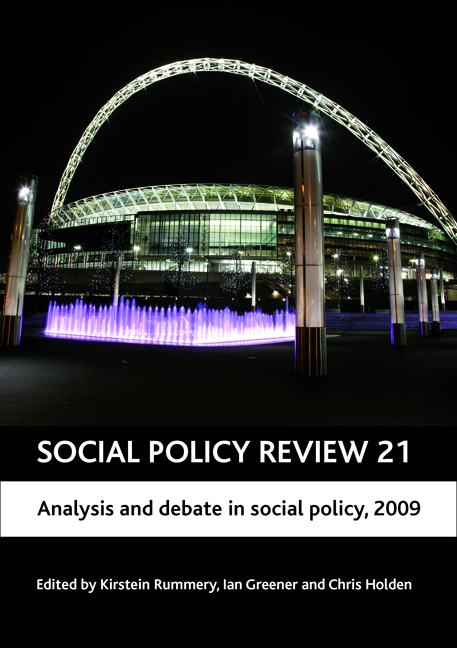five - Tackling squalor? Housing’s contribution to the welfare state
Published online by Cambridge University Press: 05 July 2022
Summary
Introduction
This chapter offers a long-term perspective on the role played by council housing in tackling the ‘social evil’ of squalor within Scotland. By the mid-1970s, public sector housing – encompassing council, new town and Scottish Special Housing Association property – accommodated fully two thirds of the Scottish population (Gibb, 1989). The proportion of the population housed by the public sector in England, by contrast, was markedly less at just one third (Ravetz, 2001). So public housing in Scotland was on a markedly different scale, with a state housing sector comparable to many countries in the-then ‘Eastern Bloc’. Scotland consequently provides the ideal locus to explore the contribution that council housing has made to the post-war welfare state over the last 60 years. But given that the state's role in housing provision pre-dates other welfare state developments, the longer timeframe of this intervention demands proper consideration since it established the immediate post-war ambitions for housing policy. Further, adopting this longer timeframe adds a new dimension to current debates, which see the rapid retreat from the ambitions of the welfare state solely as a response to an overt privatisation agenda, best encapsulated by the Conservatives’ ‘Right to Buy’ legislation of the 1980s. What this chapter argues is that state housing intervention was never primarily focused on eradicating squalor, but rather on housing ‘respectable’ working-class families. Given the resultant population profile of those accommodated in council housing by the mid-1970s, it was broader societal changes and associated social policy interventions, rather than just privatisation per se, that ensured that private and individual housing responses triumphed over post-war public welfare universalism; thus, the rapid demise of council housing as a mass housing solution. Today, by contrast, council housing provides for the poor and marginalised, a situation that closely fits the dominant pre-1914 conception of who should be accommodated by local authorities. Only through having to respond to the consequences of broader social changes did council housing eventually address squalor. Throughout the chapter empirical material from both Glasgow, as Scotland's largest city, and Stirling, more typical of a smaller town, is drawn on to illustrate the local impacts of national policy.
Welfare state housing post-1945
Immediately after the Second World War, the Labour government made a commitment to build new council housing, given this was a core part of national reconstruction plans.
- Type
- Chapter
- Information
- Social Policy Review 21Analysis and Debate in Social Policy, 2009, pp. 87 - 108Publisher: Bristol University PressPrint publication year: 2009

